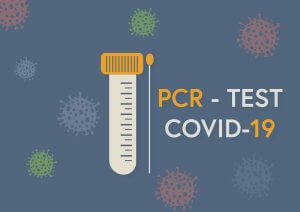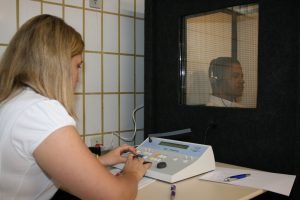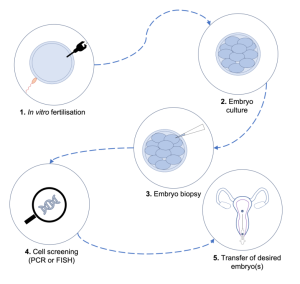Overview
A liver function tests (LFTs) is a lab test that measures certain enzymes and proteins in your blood. LFTs are one of the many enzymatic tests done in order to check the well-being of your liver. When a cell or tissue of our body e.g., liver or pancreatic cells gets damaged, it releases its cell contents into the blood. Some of these contents are enzymes produced by these cells. Liver function tests look for these enzymes or proteins that would be secreted only if your liver is damaged or diseased and they help check if the liver is working properly.
The liver is an important organ as it performs many vital functions. The liver breaks down food molecules, cleans the blood, detoxifies toxins, and stores energy. When something is amiss several symptoms may present from yellowing of the skin to slurring of speech. In these cases, you may require a liver function test.
In this article we will learn about the liver function tests and what do the results show.
Indications
A liver function test is usually ordered when there are some general indicators that the liver may have problems such as hepatitis or swelling of the liver due to inflammation. Generally, these problems are as follows:
- Appetite Loss – decreased will to eat food
- Vomiting and nausea
- Feeling very tired
- Jaundice – yellow tinge in eyes and skin
- Darker urine and lighter-toned stool
- Itching
- Abdominal pain
- Swelling of the belly – this due to excess fluid build-up in the peritoneal cavity
There are some co-morbidities or actions that may increase the chance of developing liver damage or disease, such as:
- Drink alcohol in large amounts or have an alcohol use disorder – the liver is responsible for detoxifying alcohol in the body. Repeated exposure to alcohol damages the liver and can cause cirrhosis also known as liver scar tissue.
- Have a family member with liver problems – genetic linkage to individuals with liver issues does make it more probable that you will develop liver problems in similar circumstances.
- Being overweight or obese – being overweight can put extra strain on your liver to keep normal fat homeostasis. This can lead to liver damage.
- Diabetes
- High blood pressure
- Taking medication that is directly or indirectly harming your liver – your liver is the main detoxification centre of our body and it metabolises (detoxifies) most of the drugs that we take. Excessive intake of drugs can therefore harm the liver cells.
- Gall bladder disease
- Anaemia – decrease in red blood cells or haemoglobin in the blood
A liver function test may also be indicated for certain disease prognosis i.e., to check the status of the disease in a patient after treatment.
Risks of Procedure
A liver function test is usually conducted in the form of a regular blood draw. There are no adverse risks involved and most pain subsides quickly after the procedure is performed. Very rarely, there can be a complication of venous haematoma at the site of the injection.
Patient Preparation
Before the procedure, it is extremely helpful to tell your physician of any medications you may be taking. Some medications may interfere with the accuracy of the tests. In this case, your physician may inform you to stop taking your medication the night before.
Procedure
A blood sample is usually drawn from a part of the body where a vein can be easily accessed. An ideal location is the inside of the elbow on your arm. Sometimes, it can be difficult to locate the vein. In this case, the phlebotomist then ties an elastic band on the top of your arm. The causes the blood flow to back up and accumulate in the veins in the crook of your arm. This makes the veins more noticeable so that blood can be drawn more accurately.
Before pricking your arm, the phlebotomist will almost always wipe the area down with some rubbing alcohol to disinfect the area to avoid any chances of contracting an infection. The needle is then inserted into the vein to take blood into a tube. After collecting the blood, the needle is then removed and the little puncture wound is bandaged.
This process may be repeated several times over a few days or even weeks. This helps monitors the change throughout a period and be sure of your condition. Results may take anywhere from a few hours to a couple of days to come back.
Patient Recovery
The area that is now bandaged may be a bit tender but will over a day dwindle significantly. You may also develop a small bruise. You can resume your normal activities moments after your blood drawing. Therefore, patient recovery is extremely fast.
Outcomes
There are a number of liver tests, many with complex names. Examples of some common ones include:
- Alanine transaminase test (ALT) – This enzyme helps break down protein. An excess amount may point to liver damage.
- Normal value: 29 – 33 international units per liter (IU/L) for males; and 19 – 25 IU/L for females
- Alkaline phosphate test (AST) – This enzyme is found in the liver, bile duct, and bone and any elevation could point to issues in all three.
- Normal: 8 to 33 U/L
- Albumin and total protein test – Low levels indicate damage to the liver cells as these cells produce albumin and other blood proteins.
- Normal: 3.4 to 5.4 g/dL
- Bilirubin test – a by-product of the degradation of red blood cells that the liver gets rid of. An increase in bilirubin may refer to liver damage.
- Normal: 1.2 mg/dL (total)
- Prothrombin time test (PTT) – This test measures how long it takes your blood to clot. If it takes too long then it could be a sign of liver damage.
- Normal: 25 – 35
Normal values vary significantly depending on the lab it takes place in, the age, sex as well circumstances.
- American Liver Foundation: “Liver Function Tests.”
- KidsHealth: “Blood Test: (Liver) Hepatic Function Panel.”
- Mayo Clinic: “Cirrhosis,” “Hepatitis B,” “Liver Function Tests.”
- Royal Society of Chemistry: “Enzymes.”
- World Health Organization: “What Is Hepatitis?”
- Lab Tests Online: “Liver Panel,” “Tips on Blood Testing.”
- University of Rochester Medical Center: “D-Dimer.”
- American College of Gastroenterology: “ACG Practice Guideline: Evaluation of Abnormal Liver Chemistries.”
- Cleveland Clinic: “Tests to Diagnose Gallstone Disease.”
The content shared in the Health Literacy Hub website is provided for informational purposes only and it is not intended to replace advice, diagnosis, or treatment offered by qualified medical professionals in your State or Country. Readers are encouraged to confirm the information provided with other sources, and to seek the advice of a qualified medical practitioner with any question they may have regarding their health. The Health Literacy Hub is not liable for any direct or indirect consequence arising from the application of the material provided.



